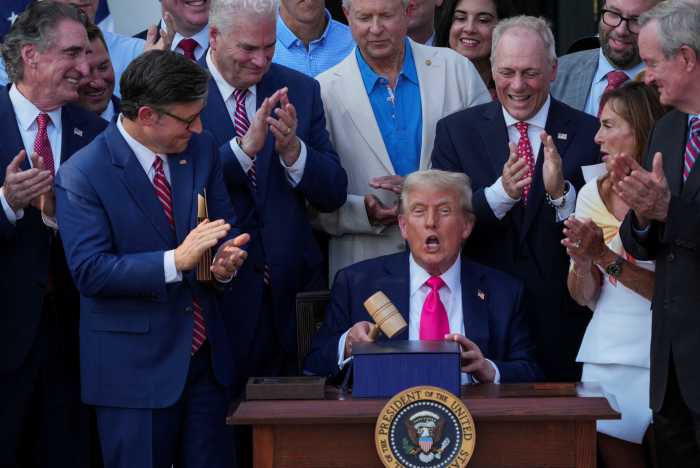
New Yorkers may pass by an ATM and bank on almost every major street in the Big Apple, but only 13% of households don’t have a basic checking account according to a report that will be released Friday by the city comptroller’s office.
City Comptroller Scott Stringer’s office said high transaction fees and the lack of clear information has forced 825,000 households to turn to other options like check cashing centers instead of opening a checking account.
The report, “Take it to the Bank,” and interactive map that launched Thursday aims to lower that figure by giving people tools to find a bank that can manage their money without a hefty price.
“When it comes to fighting income inequality, one of the ways to do that is set up a bank account and establish a credit history. The best way to do that is education,” Stringer told amNewYork.
The comptroller’s office analyzed 74 FDIC insured institutions in the city and looked at what services they offered, and their requirements such as fees, minimum deposit, and overdraft charges. The report found that the average cumulative cost of transaction fees for a customer was $73 a year.
Stringer said some banks charge as high as $500 for basic services.
“For a lot of New Yorkers, these costs add up, but there are still affordable options,” Stringer said.
One of those bank offerings is the state-mandated “Lifeline” checking account, which requires no more than $25 as an initial deposit and a minimum balance of no more than a cent. However, the report found that 28% of city banks didn’t appear to offer or advertise the option and Stringer said his office will follow up with those banks.
Capital One had the lowest projected yearly cost, which was $0, while Abacus Federal Savings Bank was the bank with the highest cash requirement for accounts, $500.
The money wasn’t the only barrier to entry for customers, according to the report.
Although the city rolled out its municipal ID system, called IDNYC, earlier this year, the report found that only 28% of the banks accepted it as a valid form of identification.
“Anyone who has a card should be able to open an account at any bank,” Stringer said.
Stringer pushed state legislation that would require banks to post info about basic services and called on federal and state regulators to offer guidance to banks on enabling their use of IDNYC. In the meantime, he implored New Yorkers to check out the map on the Take it to the Bank website to get all the information on their banking options near them.
“This is an innovative consumer tool to help themselves,” he said.




































